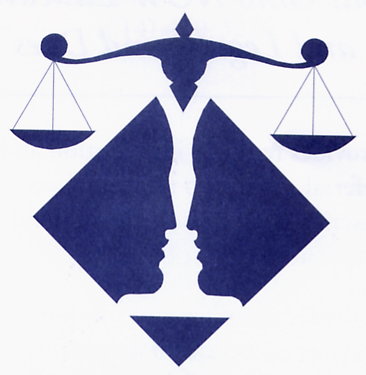-

Eliminating sex discrimination through research, education and legal activities
Poverty Level Wages
Women are Four Times More Likely than Men to Work in Jobs with Poverty-Level Wages
Washington, DC—In advance of Equal Pay Day on April 12, 2016,the Institute for Women’s Policy Research (IWPR) released new analysis finding that 6.5 million women work in occupations that have median earnings for full-time work for women below the federal poverty threshold for a family of four, compared with 1.7 million men. In addition, there are only four occupations of the 119 for which there are enough data to calculate a wage gap where women earn more than men—police and sheriff’s patrol officers, office clerks, data entry keyers, and wholesale and retail buyers. Women in the vast majority of occupations—108 of 119—earn at least five cents less on the dollar than men in the same occupation.
Across occupations, the widest gender wage gap is in finance, where male ‘securities, commodities, and financial services sales agents’ are paid nearly twice as much as women, who make 52.5 cents for every dollar earned by a man in the same occupation. All of the most common occupations that have too few women or men to calculate the gender wage gap are middle-skill occupations that require more than high school, but less than a bachelor’s degree. A recent IWPR analysis found that across all middle-skill occupations, workers in female-dominated occupations earn only 66 percent of workers in male-dominated occupations.
“The size of the wage gap and the lack of gender integration in common male middle-skill jobs is particularly shocking,” said Ariane Hegewisch, IWPR Program Director for Employment & Earnings. “These are the jobs that offer family-sustaining wages to workers who have a high school degree, but may not have gone to college. Far too many women are trying to support families with lower wages and these middle-skill jobs provide a pathway to economic security.”
Occupational earnings data by race/ethnicity and gender are available only for more aggregated occupational groups but show that for women of color in low-wage occupations, the disparity is even starker. Service occupations are the largest aggregate occupational group held by Hispanic women and the second most common held by black women, with both groups about twice as likely to work in service occupations as white women. Median earnings for women in service occupations are low for all groups of women, yet Hispanic and black women in service occupations make $430 and $440 per week, respectively, compared with $482 for white women and $676 for white men. Weekly wages in service occupations are near the poverty threshold for a family of four for all women, and below poverty-level wages for black and Hispanic women working in those occupations.
An IWPR report released in March found that one solution to closing the gender wage gap is to increase women’s access to good, growing middle-skill jobs in male-dominated sectors, such as manufacturing, information technology, and transportation. With recent studies showing that over half of the gender wage gap is due to occupational and industry segregation, IWPR found that many women work in jobs that already have a similar skill profile to better paying, male-dominated jobs. In fact, if 10 percent of women workers entered similar but higher paying male-dominated jobs, the median earnings for these women would increase by over 50 percent.
“With half of American families relying either solely or heavily on the mother’s earnings, we cannot afford to have women largely concentrated in occupations that provide poverty-level wages,” said IWPR President Heidi Hartmann, Ph.D. “Increasing women’s access to higher paying male-dominated jobs would be a boon to individual families and the larger economy.”
The Institute for Women’s Policy Research (IWPR) is a 501(c)(3) tax-exempt organization that conducts rigorous research and disseminates its findings to address the needs of women and their families, promote public dialogue, and strengthen communities and societies.
-END-
The Pathways to Equity Initiative shows job changes that can improve women’s economic standing and meet employers’ demands for skilled workers.Visit www.womenandgoodjobs.org to find a target job and view the data.
Find more IWPR resources on the gender wage gap. >>
Follow IWPR on Twitter @IWPResearch and Facebook.
